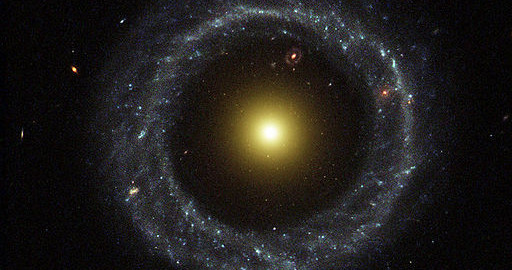Written By: Ran Levi
This article is a part of a series named ‘Astronomy Shorts’, which brings bite-sized interesting and easy to understand facts and anecdotes about our universe and solar system.
More Astronomy Shorts and Astronomy-related topics
This article is a transcript of a podcast. Listen to the podcast:
Subscribe: iTunes | Android App | RSS link | Facebook | Twitter
Explore episodes in other categories:
Astronomy & Space | Biology & Genetics | History | Information Technology | Medicine & Physiology | Physics | Technology
The universe we live in is really big. Its vastness is difficult to even comprehend. That vastness is why, even if our universe is teeming with life, it is unlikely that we will ever meet other intelligent life forms. Let’s take a closer look at the scale of the universe: distances, speeds, and volumes.
Distance
If we were to start a car and point it towards the sky, it would take us a hundred and sixty days of continuous travel, at a speed of seventy miles per hour, to get our nearest neighbor, the moon. Lets’ say we wanted to get to Neptune, the most distant planet in the Solar System. A driver who hit the road five thousand years ago, around the time when the Egyptians built their pyramids, would be parking his car right about now.
If that isn’t surprising enough, the distance to the nearest star, Proxima Centauri, is on a completely different scale: it’s about a hundred thousand times farther than the distance between us and Neptune. In relative terms, the difference in distances between traveling to Neptune and traveling to Proxima Centauri is like the difference between one step and a sixty-mile long hike.
Speed
Light travels about a hundred and eighty thousand miles in one second – the fastest speed possible – yet it takes it about four whole hours for light to travel from the Sun to Neptune. The fastest person on earth, as of this recording, is Usain Bolt from Jamaica who runs a hundred meters in 9.58 seconds. The fastest man-made object is the Helius 2 spacecraft, which traveled at a speed of almost fifteen thousand miles per hour, as it neared the Sun. It would have finished a hundred meter race within less than a millisecond. In comparison, the Sun moves within the Milky Way at a speed of about five hundred and sixty thousand miles per hour. It would have reached the finish line of a hundred meter race before Helius 2 even reached the quarter line.
Size
The height of the tallest building known today, the Burj Khalifa in Dubai, is two thousand six hundred and eighty-three feet – which is just a little less than stacking one Empire State Building on top of another. If we stack fifteen thousand Burj Khalifa buildings, we would reach the other side of planet Earth.
In comparison, the diameter of the Sun is around one and a half million miles; – so if we placed Earth next to the Sun, it would look like a man standing next to the Burj Khalifa.
The estimated diameter of the observable universe is ninety-three billion light years (a light year is a distance light travels in one year in a perfect vacuum). Therefore, the ratio between the Sun and the universe is more or less the ratio between a man and the Sun.
And one more thing: while the diameter of the visible universe is ninety-three billion light years, the age of the universe is “only” fifteen billion years. This seems like a paradox, because if there is nothing faster than light, then the diameter of the expanding universe should be, at most, fifteen billion light years as well. Could it be that the universe is expanding faster than the speed of light?
Well, the solution to this problem makes sense once we understand that it’s not light that is expanding, but space itself. Ok, imagine two dots marked on a piece of a rubber band. Now imagine the rubber being stretched to all directions – the two dots will grow further away from each other, but neither of them moved on its own. In a similar way, stars are drifting apart from one another due to new space continuously being created, and that expansion is not limited by the speed of light.
